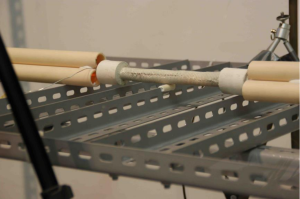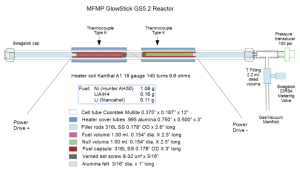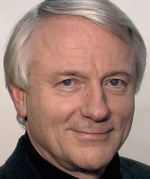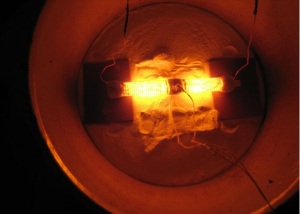After five years of debate on the much discussed energy device, the E-Cat, I have finally been shown a theoretical model that makes sense and which seems to be consistent with both laws of physics and experimental results, which I will present here.
As I have said before—only with a valid theoretical model, effective R&D on LENR based devices can start in earnest. And judging from the over 200 patent applications Rossi says he is preparing, Rossi probably has this kind of understanding. Quite possibly, the model he is using is close to what you’ll find here below.
This blog post will be fairly technical and a bit long, but for those wanting to get this understanding I think it’s worthwhile. Also note that it will be updated continuously with corrections of details that I might have misunderstood, or that need further elaboration.
And before I start—a special thanks to Bob Greenyer, co-founder of MFMP, who shared recent insights with me, and also insisted that I carefully read the patents of long-time researcher on nickel-hydrogen based LENR, Francesco Piantelli, who used to collaborate with Rossi’s scientific advisor, late Prof. Sergio Focardi. Below you’ll find a series of videos that Greenyer is producing on this topic (I will add more of them as they are published), and just like Greenyer, I would like to highlight the importance of Piantelli’s and Focardi’s work.
Let’s get started!
§
First, a short crash course in necessary physics (jump this piece if you feel familiar with basic nuclear physics).
Reactions releasing energy are called exothermal, and the energy released always corresponds to a decrease in mass. This is determined by Einstein’s famous formula ‘energy equals mass times speed of light squared’ (E=mc²). And since speed of light is such a large number, very little mass is needed to obtain large amounts of energy.
For chemical reactions (burning wood, oil, digesting food etc), this loss of mass is so small that it’s hardly detectable.
For nuclear reactions (e.g. fission, like in nuclear power plants, or fusion, like in the sun and the stars) the loss of mass is more notable. It’s about a million times larger in the same amount of fuel as in chemical reactions, reflecting the fact that you get about a million times more energy from a certain amount of nuclear fuel as from the same amount of chemical fuels, such as e.g. oil.
This also means that one gram of nuclear fuel corresponds to one or several tons of oil. Intuitively, this difference between chemical and nuclear reactions can be understood noting that chemical reactions involve the tiny electrons in the atom, while nuclear reactions involve the nucleus which has a mass thousands of times larger than the electron’s mass, and which is held together by forces much stronger than those needed to keep the electrons in their orbits.
Energy from nuclear reactions can be obtained in mainly two ways—fusing small nuclei (fusion) or splitting large nuclei (fission)—both can be exothermal reactions. This works because nuclei happen to be most ‘relaxed’ when they have an intermediate dimension—specifically, the most relaxed of them all are the elements iron and nickel.
Normally you say that such nuclei have larger binding energy per nucleon. You can understand this by thinking that they are at the bottom of an energy hole, while smaller and larger nuclei are higher up in the hole. And if you want to split nuclei of intermediate size to get smaller nuclei, or fuse them to obtain bigger nuclei, you need to add energy, pushing them up from the energy hole, since these smaller or larger nuclei require stronger forces to remain intact. In an analogue way, energy is released when small nuclei are fused, and when large nuclei are split, making them fall deeper down in energy hole.
And since energy corresponds to mass, this can be measured as a loss of mass. Consequently, the isotope 56iron (26 protons, 30 neutrons), which is at the bottom of the energy hole, has the lowest mass per nucleon, which means that any reaction leading to 56iron implicates a loss of mass per nucleon which will be released as energy according to E=mc².
Normally, the released energy in nuclear reactions is carried away as strong electromagnetic radiation, called high-energy gamma radiation, and as particles such as neutrons with high kinetic energy. In LENR—Low Energy Nuclear Reactions—however, almost no radiation is observed. Yet, the high energy release per amount of fuel (grams corresponding to tons of oil) indicates that it is a nuclear reaction and that it cannot be a chemical reaction.
So what we are looking for is a model for transforming nuclei towards 56iron, without having strong radiation. This is often called the second miracle of cold fusion or LENR. The first miracle is how to make two nuclei fuse at low temperatures, since they are both positively charged and repel each other. This repelling is called the Coulomb Barrier, and according to known physics, a temperature of ten to a hundred million degrees is needed in order to make free nuclei move so fast that they can overcome this barrier (note however, that in LENR, nuclei are not free, but rather fixed in a lattice or possibly moving in a liquid). That is why hot fusion is so hard to achieve, and require billions of euros/dollars for building experimental reactors such as ITER.
Crash course finished!
§
Let’s have a look at the proposed model which is extensively described in Piantelli’s patents EP2368252B1 (2013) and EP2702593B1 (2015). (The first was revoked in September 2015 after being challenged by Rossi’s company Leonardo Corp that basically claimed to have arrived at the same point before. However, the decision to revoke the patent has been appealed by Piantelli’s legal representative).
(Update: Also note this patent application by Piantelli: EP2754156A2, which I haven’t studied in detail yet. Update 2: The patent was granted on April 15, 2016)
1. The first step is to expose a transition metal to hydrogen. Nickel is for various reasons the best choice of transition metal, but any transition metal should do.
2. Next step is to obtain H- ions, i.e. hydrogen atoms with one extra electron. To do this, Piantelli heats the system to a certain temperature and also uses a certain pressure to control formation of H+ and H- ions when splitting hydrogen molecules, H2. In the E-Cat, hydrogen is provided through lithium aluminium hydride, LAH, which when heated transforms into hydrogen gas, aluminium and LiH, the latter consisting of Li+ and H- ions, making it an effective source of H-. This invention by Rossi, described in his patent, should be one reason that he has managed to achieve much higher power yield from the process, but it should be noted that Rossi until the second generation E-Cat reactor—the Hot Cat in 2012—used hydrogen from a canister (and maybe had another method for generating H-, even without knowing it).
Note: Some suggest that the H- concept might refer to a different form of hydrogen, akin to Randell Mills (CEO, founder of BLP) concept of hydrino, or Swedish researcher Leif Holmlid’s concept of ultra dense deuterium.
3. The system is now triggered in one of several ways ranging from thermal shock, mechanical impulse, and ultrasonic impulse to laser ray, electromagnetic fields, electric or magnetic pulse and particle beams. Before this step, the system is heated, in my understanding beyond the Debye temperature at which atoms are oscillating at the highest frequency in the lattice, and beyond which electric and thermal conductivity decreases significantly (the Debye temperature of nickel is +177°C). What the triggering essentially does is suddenly moving the conduction and the valence band of electrons.
4. This triggering leads to one of the electrons in the nickel atom being replaced by the H- ion (as described in the patent, this is in accordance with the Pauli exclusion principle and with the Heisenberg uncertainty principle). The shock affecting the levels of valence and conduction band is an important part in this capture process (see video below).
5. Since the H- ion has a mass that is almost 2,000 times larger than an electron mass, it tends towards orbits much closer to the nickel nucleus, while sending out Auger electrons and X-rays. In some way (to be explained in further detail), this is probably how the X-ray burst is produced that MFMP observed recently in a replication attempt of the E-Cat. One hypothesis is that this burst can be made to happen during pre-processing of the fuel (see video below). Such fuel, containing a meta-stable form of nickel with H- ions in one of the electron shells, could then be transported and introduced in reactors (especially if the nickel grains are covered and protected by LiH and Al). Then when the reaction starts, the burst will not occur. Only much less energetic X-rays (photons) will be released (when the H- ion is moving in smaller steps towards lower energy states in the electron shell?).
6. The low energy X-ray photons are being absorbed by a shielding material such as lead or tungsten, which is heated and then emits what is called black-body radiation—essentially infrared light or heat radiation which has a frequency of terahertz, possibly with the property of stimulating the process of replacing electrons by H- ions.
Note: An hypothesis by Bob Greenyer is that one certain time interval of external triggering heats the shielding material enough for it to stimulate further reaction for five times that time interval, without external triggering (power input). This would lead to a COP (coefficient of performance = power out/power in) of 6, which Rossi has steadily claimed as a guaranteed minimum.
7. When the H- ion is in an orbit close to the nickel nucleus, it loses its electrons thus becoming a free proton, and two things can then happen:
a. If the distance to the nucleus is minor than 10-14 m, the H nucleus—i.e. a proton—can be captured by the nickel nucleus, resulting in one of several possible nuclear reactions (see the patent) with mass loss and great energy release, according to Piantelli resulting in heat. (Why isn’t the energy released as high energy gamma radiation? Maybe because the proton is so close to the nucleus that it gets captured, without having a large kinetic energy as in hot fusion. Maybe also because the nickel atom is not free but fixed in a lattice?). This process has certain similarities with muon-catalysed fusion, and would be an explanation to the first miracle—overcoming the Coulomb Barrier at modest temperatures by getting enough close to the nickel nucleus, disguised as a very heavy electron. (And maybe also an explanation to the second miracle—obtaining nuclear fusion without high energy radiation).
b. (Maybe higher probability): If the distance is larger than 10-14 m, the proton is expelled from the metal atom through the repelling Coulomb force, with high kinetic energy (from 0 to 6.7 MeV) determined by Piantelli through calculation, and confirmed through cloud chamber experiments. NOTE: Piantelli has observed protons escaping from pre-processed nickel, well after the reaction has stopped. This indicates that the hypothesis in point (5) above could be valid—that pre-processed nickel with H- ions in the electron shells is meta-stable, and that protons get ejected once in a while. Not enough often, however, to keep a reaction, as described below, running.
8. These high energy protons can react with other atom nuclei, resulting in other nuclear reactions. Particularly, Piantelli proposes reaction with lithium or boron. Reactions with lithium yield alpha particles (which are nuclei of helium), and again, large amounts of energy, carried away as kinetic energy by the alpha particles (?). Such fusion between protons with much lower kinetic energy (225 eV) and lithium is described by Unified Gravity Corporation in patent application WO2014189799A9.
Note: In his second patent, Piantelli proposed to have a second material, such as lithium, in front of the primary material, nickel, at a distance of about 7 cm. In order not to stop the protons, however, the surrounding pressure must be very low. In the E-Cat, on the other hand, pure lithium is part of the fuel and in direct contact with the nickel. Therefore there’s no need for low pressure. Probably, though, a particular preparation of the fuel is necessary. The presence of lithium in the fuel, also described in Rossi’s patent, should be the second important invention by Rossi that leads to higher power yield.
9. The alpha particles get easily stopped, and grabs electrons to form helium, while also contributing to heat production when their kinetic energy is absorbed. They can also lead to further nuclear reactions with lithium.
10. The low energy X-ray radiation from (5) above could possibly be used to create electricity through the photoelectric effect, by exposing suitable materials to the X-ray radiation. The X-ray radiation could also be downshifted into visible light (with lower frequency), with the help of e.g. silver (Ag) or other elements with similar characteristics, which is possibly what Brilliant Light Power does in its ‘SunCell’. Both these effects could be in use in Rossi’s third generation reactor—the E-Cat X—supposedly producing heat, light and electricity.
11. A particular option, according to Piantelli’s second patent, is to use radioactive materials such as 232Th, 236U, 239U or 239Pu as secondary material. A part from producing energy, the process would then provide a possibility of a eliminating long-lived radioactive waste of various provenience, since the nuclear reactions would transform these elements through transmutation (a change of the number of protons) into other elements with shorter lifetime (half-life). Here’s a patent application by Piantelli on this method: WO2013046188A1.
Update: Bob Greenyer elaborated this model already in September 2015 in this piece at E-Cat World. The comments below are also adding to the picture.
§
A couple of things are worth noting:
- Piantelli has obtained two patents based on this model, probably having significant experimental evidence for details in the patent. This would not be surprising since he has been doing extensive experimentation with this kind of process since 1989 when he first discovered a heat effect from nickel and hydrogen by coincidence, performing a biotech experiment. Piantelli also has a very advanced private lab.
- In the model of the E-Cat process, proposed by Norman Cook of Kansai University and Rossi, the process is initiated by a reaction between a proton and lithium. However, there’s no explanation as for where the protons come from. Point (7b) above could be one possible explanation.
- As far as I understand, MFMP and Bob Greenyer have a series of experimental indications that strongly support the theory described above.
- My understanding is also that the reaction paths described in Piantelli’s patents, precisely bring out the isotopic shifts observed both in the Lugano report, and in an earlier isotopic analysis performed on behalf of late Prof Sven Kullander on a sample of supposedly used E-Cat fuel provided by Rossi in February 2011. The result of the latter analysis was used by critics as a proof that there was no nuclear reaction in the E-Cat and that Rossi had faked the fuel sample.
- In a recent E-Cat replication attempt, MFMP observed a short high-count burst of low energy X-ray photons. According to an hypothesis by Bob Greenyer, there might be a way to pre-prepare the fuel in order to avoid this X-ray burst.
- One possible long-term outcome according to this reaction model, if nuclear reactions progress along long reaction paths, would be the formation of heavy and potentially radioactive elements. This might have been a concern in the recently concluded one-year 1MW test by Rossi and Industrial Heat, and a possible negative outcome, since it would make the technology much harder to certify and commercialise. Most probably, the the result of the ash analysis made by the third party institute (the ‘ERV’) is therefore crucial.
§
Here are a few videos by Bob Greenyer from MFMP, explaining the findings with regard to Piantelli’s LENR model (several of the videos and more info can be found on MFMP’s website):
– – –
Implications of the X-ray signal found at the replication attempt:
Why using 62Nickel in the LENR reactor?
A series of possible LENR based reactor designs, even with very low startup temperature (trying to publicise as many ideas as possible to make them non-patentable):
Understanding of Brilliant Light Power’s device, the SunCell, with regard to the findings from the MFMP replication attempt:
Thank you Piantelli — Piantelli’s and Rossi’s parts in the discovery:
Correlation between Piantelli’s and Randell Mills’ theories—Bremsstrahlung, Auger Electrons and more:
Pre-processing the fuel to avoid X-Ray burst:
Importance of valence and conduction bands, surface plasmons and nanostructure of nickel:







